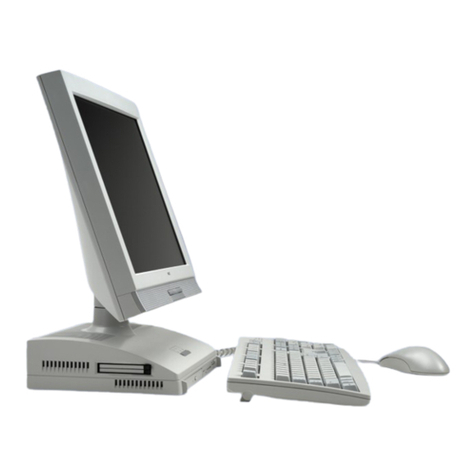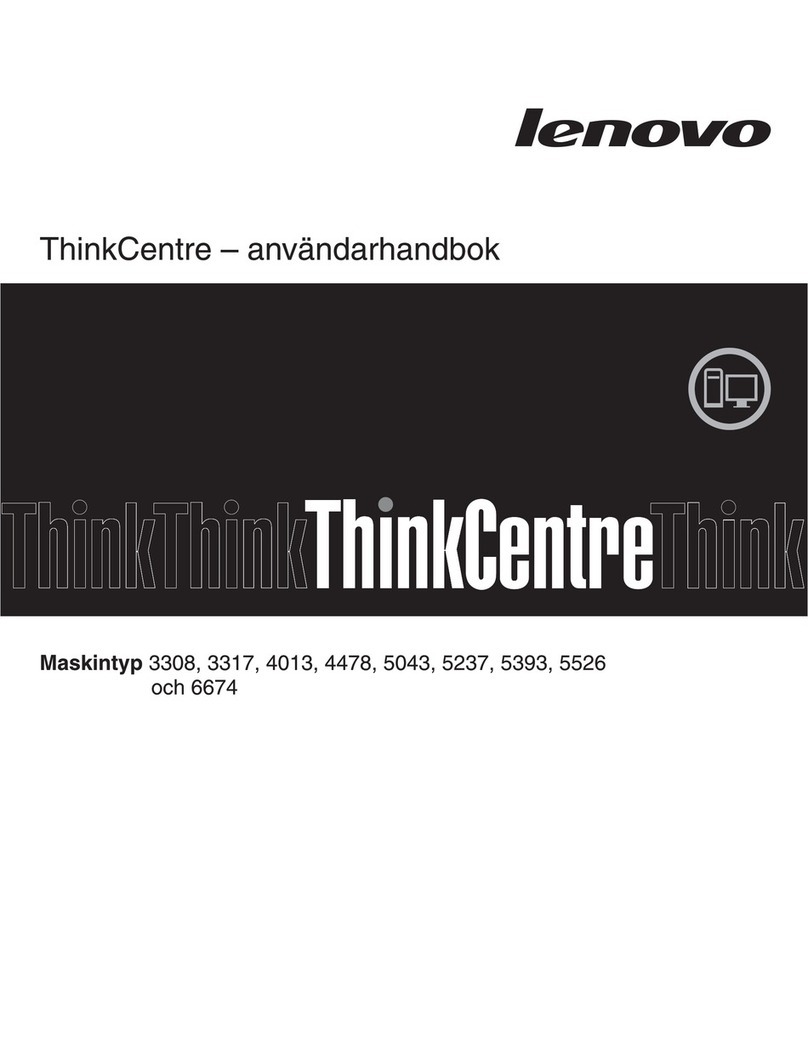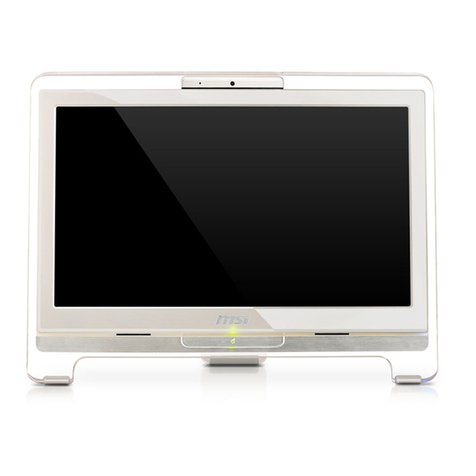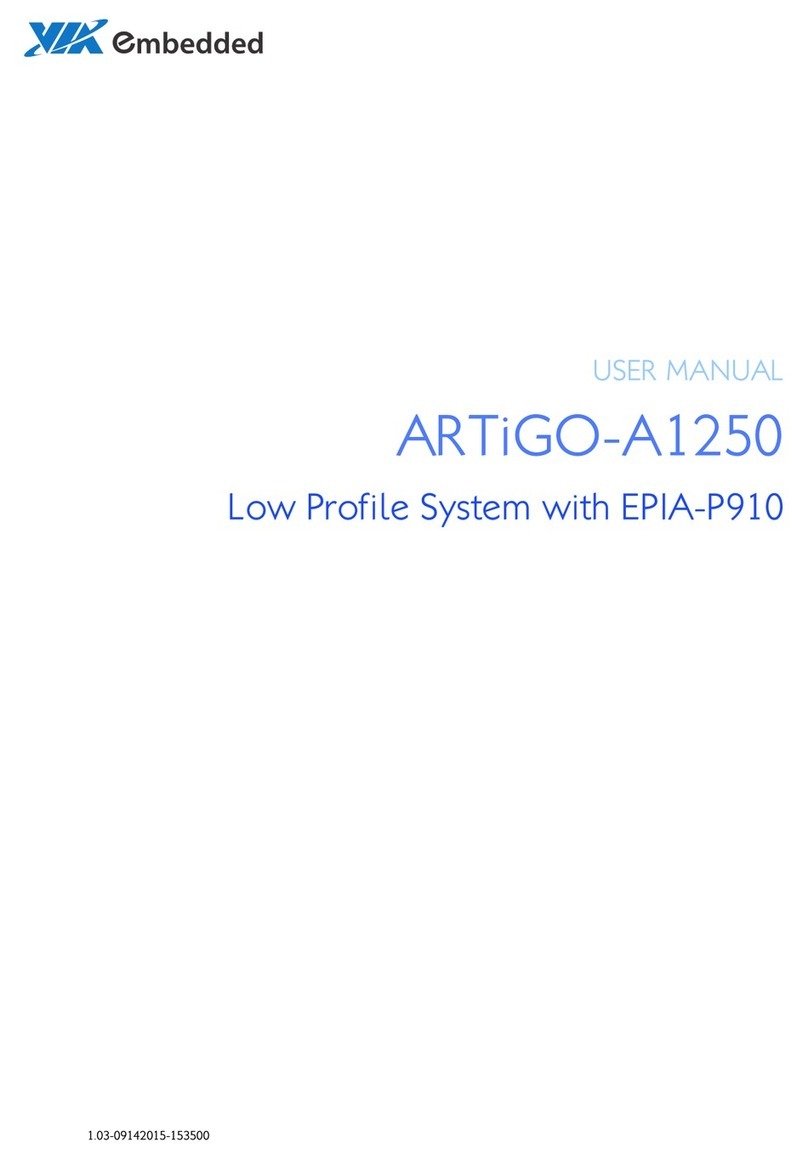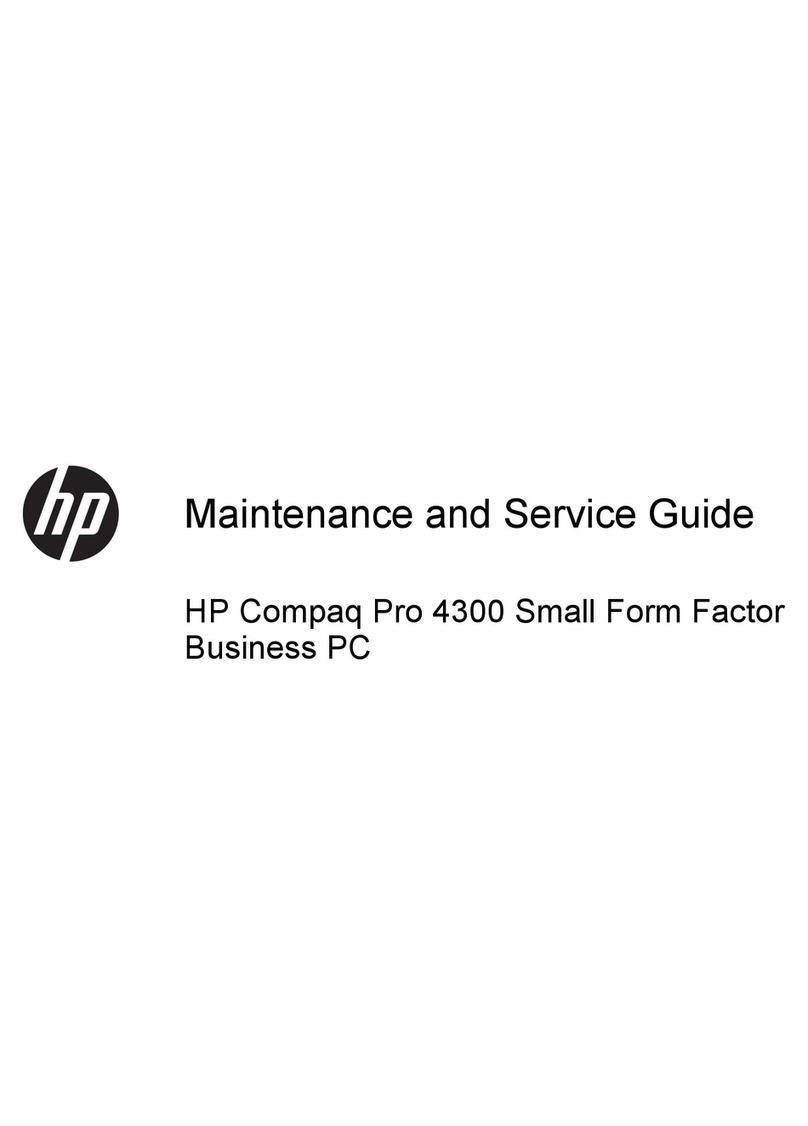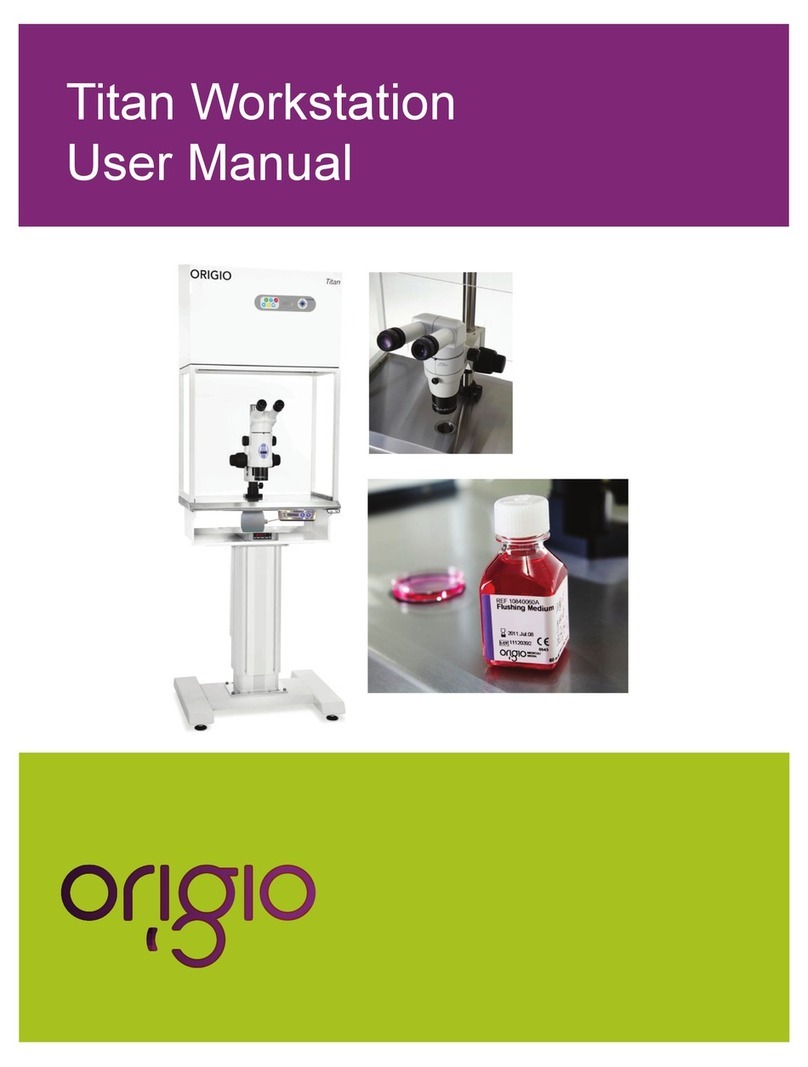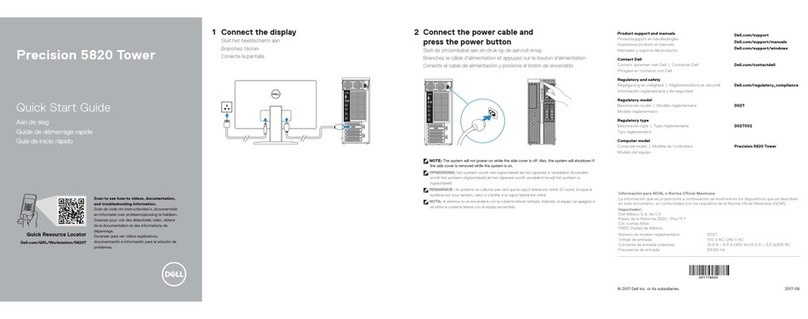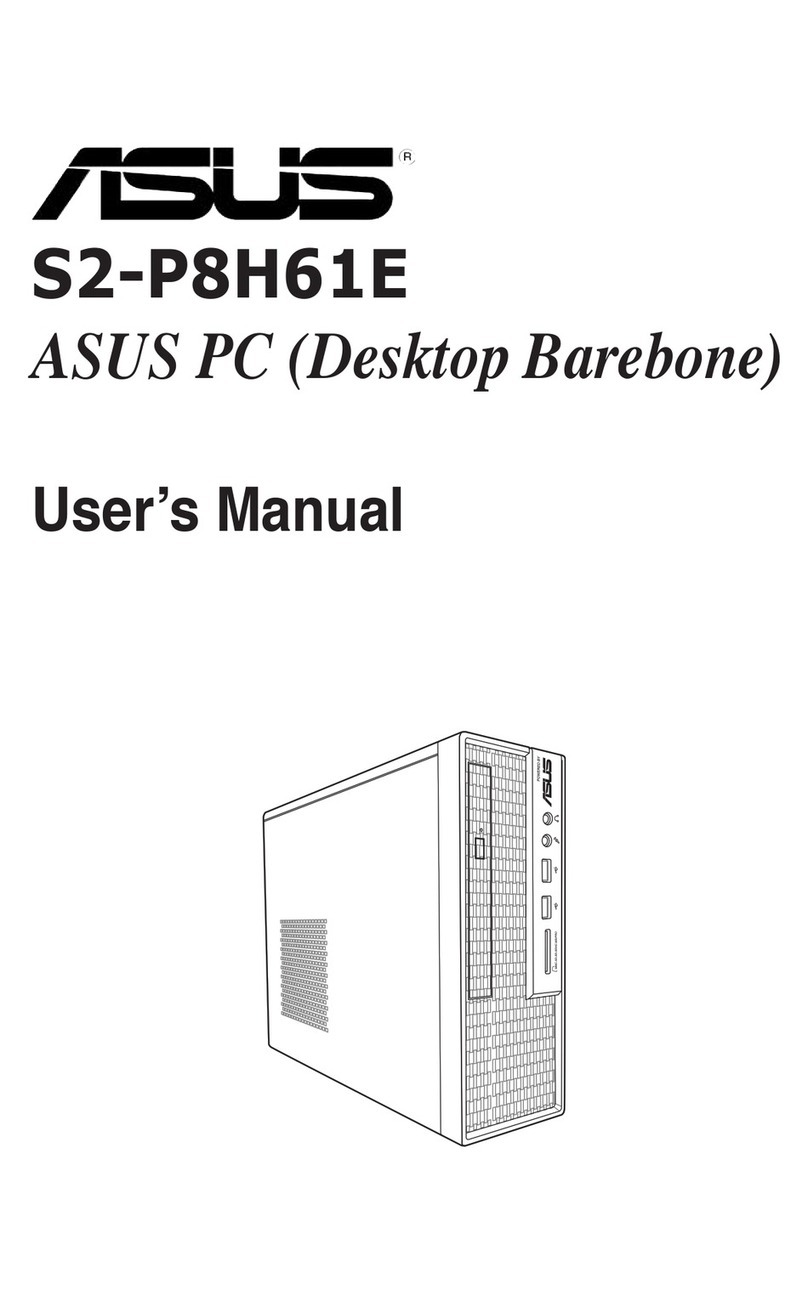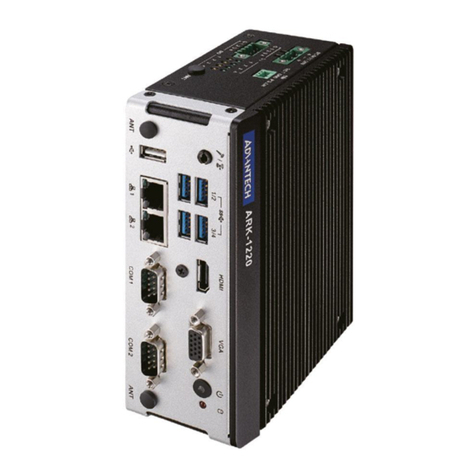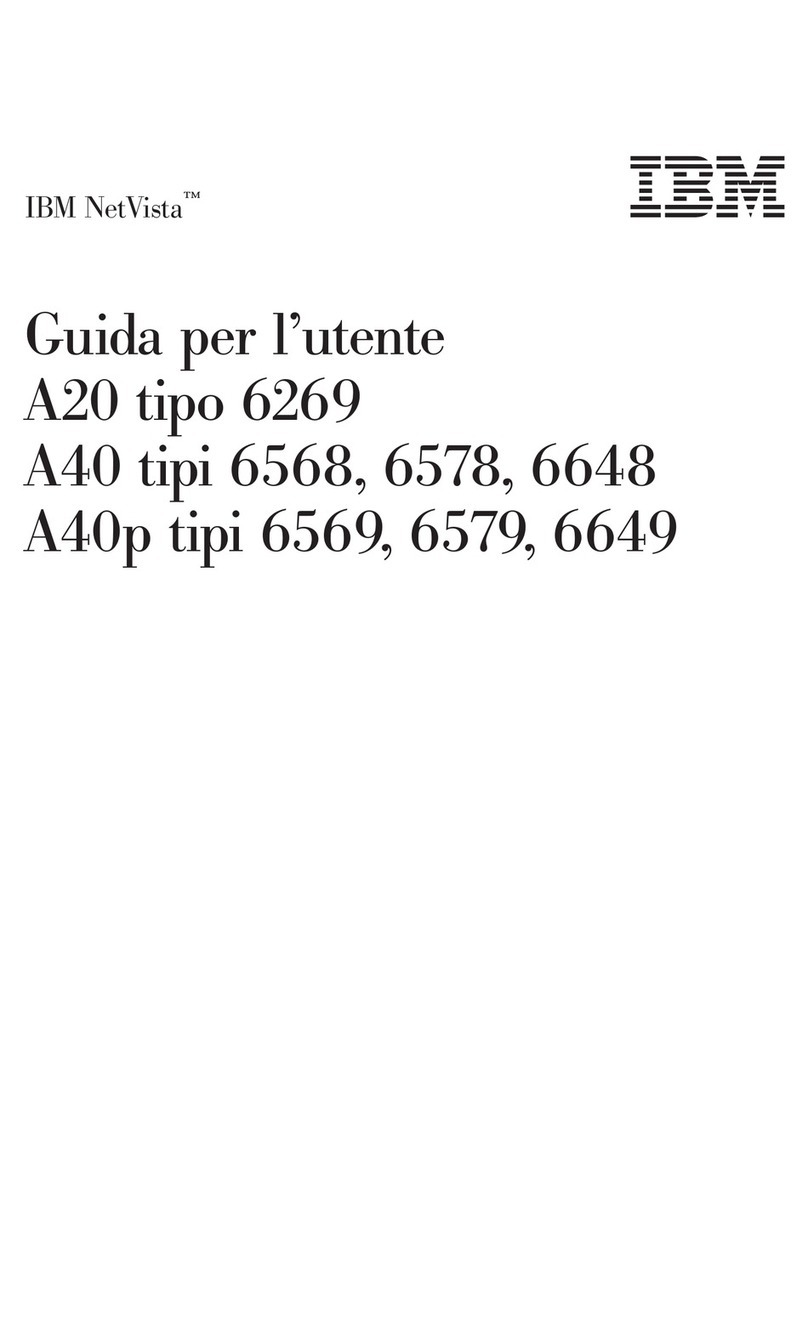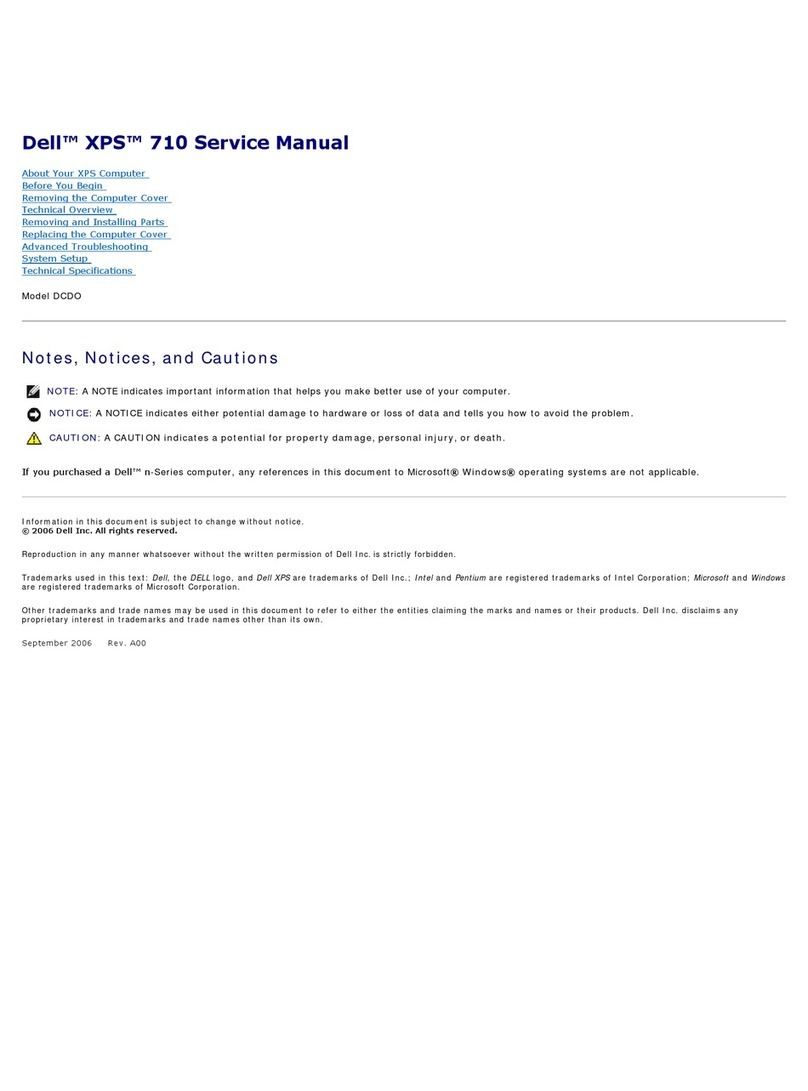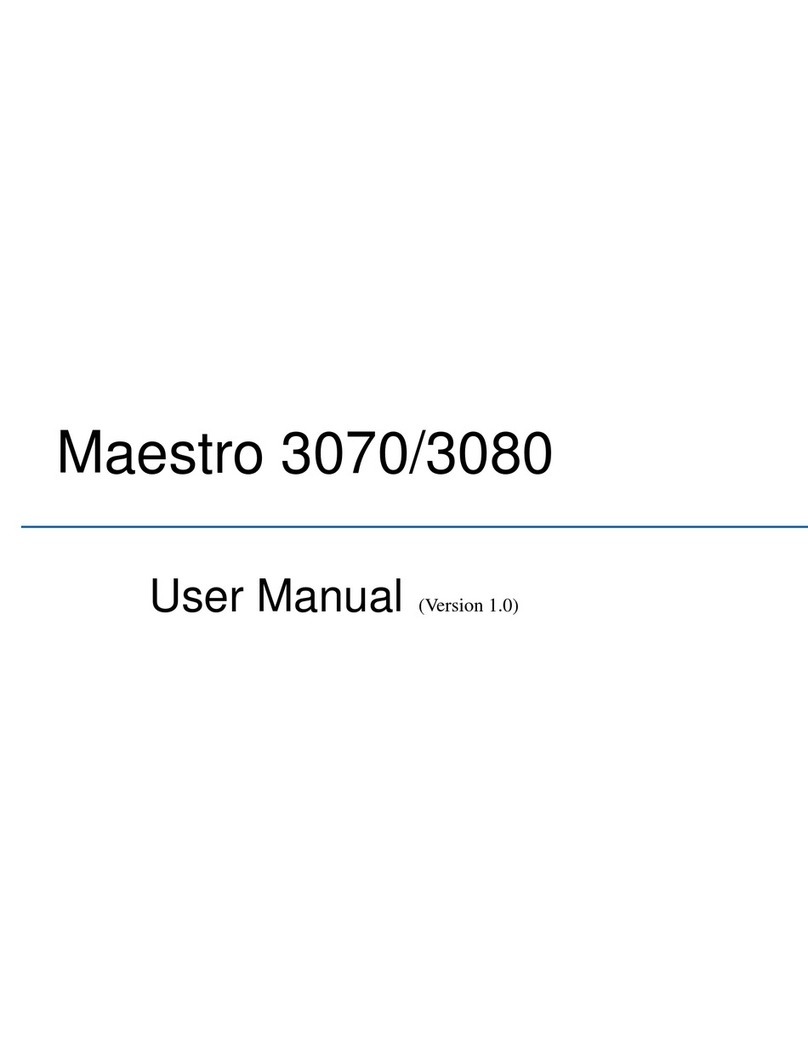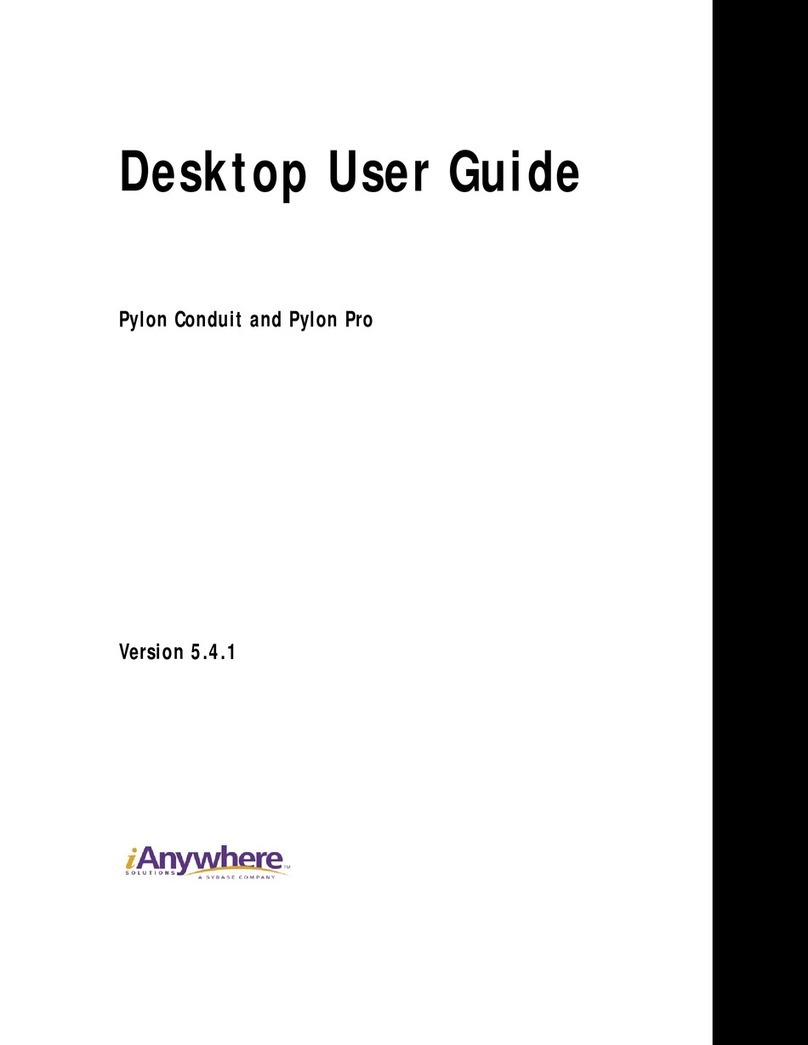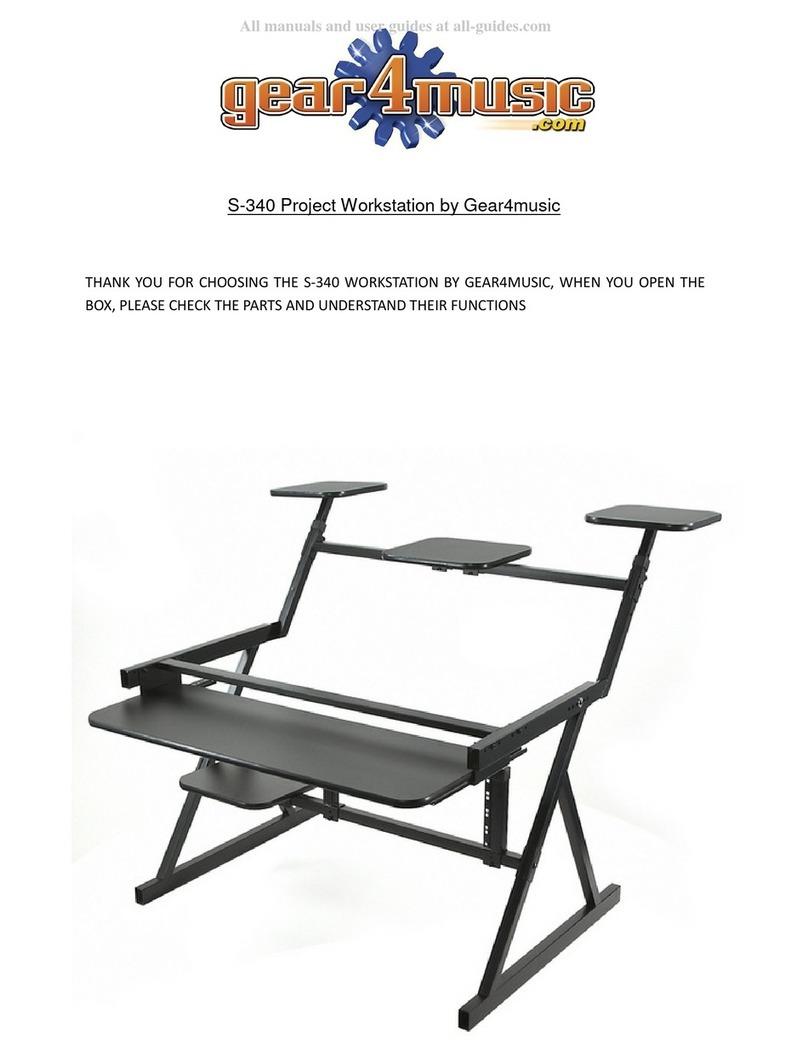Autonetics RECOMP II User manual

RECOMP
•
COMPUTER
S·E RV
ICE
MANUAL
Autonetlce
~
Industrial
Products
A DIVISION
OF
NORTH
AMERICAN
AVIATION
.
INC
3584
WILSHIRE BOULEVARD.
LOS
ANGELES 5.
CALIFORNIA

RE
MPII
• • • • •
• • •
.
...........
......
...
..........
...
.....
• •
•••••
• •
••
•••
••
•
••
•
COMPUTER
SERVICE
MANUAL
20
August 1959
Autonetlcs
~
Industrial
Products
A
DIV'ISION
OF
NORTH
AMERICAN
AVIATION,
INC,
3584
WILSHIRE BOULEVARD,
LOS
ANGElES
5,
CAliFORNIA
188

11
SYSTEM
TESTER
REFER
TO
TEST
EallPMENT
SERVICE
MANUAL
PUB
508-T-9
TYPEWRITER
REFER
TO
INPUT-
OUTPUT
SERVICE
MANUAL
PUB
508-T-8
TYPEWRITER
ASSEMBLY
PHOTOELECTRIC
TAPE
READER
ASSEMBLY
TAPE
READER
COMPUTER
REFER
TO
COMPUTER
SERVICE
MANUAL
PUB
508-T
-7
TYPEWRITER
POWER
SUPPLY
AND
CONTROL
DESK
CONSOLE
r-::I
L::J
REFER
·
TO
INPUT-OUTPUT
SERVICE
MANUAL
PUB
508-T-8
RECOMP
II
System
Block
Diagram
DESK
COMPUTER
•
CONTROL
CONSOLE
REFER
TO
INPUT-
OUTPUT
SERVICE
MANUAL
PUB
508-T-8
COMPONENT
TESTER
REFER
TO
TEST
EallPMENT
SERVICE
MANUAL
PUB
508-T-9
NOTE
:
SYSTEM
SERVICE
MANUAL
PUB
508-T-6
CONCERNS
COMPONENTS
ONLY
WHEN
CONNECTED
TOGETHER
AS
A
SYSTEM.
RC7-183
508-T-7

PREFACE
This
manual
is
1
of
a
set
of
5
published
by
Autonetics
to
provide
main-
tenance
information
on
the
RECOMP
II
computer
system.
System
Service
Manua~:
Publication
No.
508-T-6
Computer
Service
Manual:
Publication
No.
508-T-7
Input-Output
Service
Manual:
Publication
No.
508-T-B
Test
Equipment
Service
Manual:
Publication
No.
508-T-9
System
Refe
rence
Schematic
s:
Publication
No
..
508
- T - 11
The
block
diagram
of
figure
1
illustrate
s
each
system
component
and
shows
its
applicable
service
manual.
In
brief,
the
scope
of
each
RECOMP
II
service
manual
is
as
follows:
System
Service
Manual:
This
manual
describes
the
general
concept
of
RECOMP
II
maintenance
and
provides
operating
instructions
for
checkout
of
the
computer
system
using
the
system
tester
and
both
manual
and
automatic
test
routines.
The
goal
of
these
system
test
procedures
is
to
isolate
mal-
functions
to
a
specific
operational
area
or
system
component.
Computer
Service
Manual:
This
manual
describes
the
operational
com-
ponents
located.in
the
computer
assembly,
including
memory
unit,
power
circuits,
and
signal
circuits.
It
also
provide
s
maintenance
instructions
and
adjustments
for
computer
components,
and
gives
a
detailed
set
,Of
test
pro-
cedures
for
computer
circuit
boards
using
the
component
tester.
Input-Output
Service
Manual:
This
manual
describes
the
operational
characteristics
·of
RECOMP
II
input-output
equipment
(control
console,
type-
writer,
tape
reader,
and
tape
punch).
It
also
provides
maintenance
and
test
instructions
for
these
input-output
devices
and
the
associated
desk
assembly.
Test
Equipment
Service
Manual:
This
manual
describes
the
functional
characteristics
of
the
system
tester
and
component
tester.
It
also
provides
maintenance
and
test
instructions
for
these
two
RECOMP
II
test
equipments.
System
Reference
Schematics:
This
publication
provides
a
set
of
schernatics,
assembly
drawings,
wiring
charts,
and
signal
charts
for
each
system
component;
i.
e.,
computer,
desk,
control
console,
tape
reader,
typewriter,
and
tape
punch.
508-T-7
-
iii
-

Preface
Introduction
General
Operational
Characteristics
Power
Requirements
.
Physical
Characteristics
Functional
Description
General
Memory
Power
Circuits
Signal
Circuits
"
Trouble
Analysis
and
Adjustments
, , '
General
Memory
Power
Circuits
Signal
Circuits
General
Maintenance
Information
CONTENTS
,Removal
and
Replacement
of
Components
•
Computer
Connector
Signal
Chart
Circuit
Board
Connector
Signal
Charts
.
-
iv
-
Page
iii
I
I
I
2
2
4
4
4
12
22
42
42
45
53
63
96
96
100
100
50B-T-7

Figure
1.
2.
3.
4.
·5.
6.
7.
B.
9.
10.
lL
12.
13.
14.
15.
16.
17.
lB.
19.
20.
21.
22.
23.
24.
25.
26.
27.
2B~
29.
30.
31.
32.
33.
34.
35.
36.
37.
3B.
ILLUSTRATIONS
RECOMP
II
System
Block
Diagram.
Computer
As
sembly.
Exterior
Views
Computer
Assembly.
Interior
Views
Cross-Sectional
Diagram
of
Magnetic
Memory
Air
Thrust
Bearing
Diagram.
Write
Head
Construction
.
Flux
Diagram
of
Perpendicular
Recording.
Read
Head
Construction
Diagram
Reading
of
Perpendicularly
Recorded
Digits
Waveforms
in
Writing
and
Reading
.
Permanently
Recorded
Clock
Track
Waveform
..
Head
Positions
on
Magnet
Disk
(Systems
501
through
520)
..
'.
Head
Positions
on
Magnet
Disk
(Systems
521
and
Subsequent)
.
Simplified
Power
Control
Schematic.
Power
Control
Circuits
Block
Diagram
-100-
Volt
Power
Supply
B'lock
Diagram
-lB-
Volt
Power
Supply
Block
Diagram.
-12-Volt
Power
Supply
Block
Diagram
-6-
Volt
Power
Supply
Block
Diagram
75-
Volt
Power
Supply
Block
Diagram
6-Volt
Power
Supply
Block
Diagram
O.
75-Volt
Power
Supply
Block
Diagram
..
Location
and
Color
Coding
of
Computer
Etched
Boards,
Panel
Assembly
No.
1.
Location
and
Color
Coding
of
Etched
Boards
Panel
Assembly
No.2.
Clock
Circuit
Waveforms
and
Approximate
Voltages.
Clock
Boards
No.
1
and
No.
2
Block
Diagram.
Typical
Diode"
And"
Gate
Schematic
Typical
Diode
II
And-And"
Gate
Schematic
.
Use
of
IIAnd-Or"
Gates
in
a .1-
Word
Arithmetic
Register
Typical"
And-Or
ll
Gate
Schematic
Flip-Flop
Block
Diagram.
Read
Switching
Network
Block
Diagram
.•
Read
Amplifier
Block
Diagram
.
Write
Circuit
Block
Diagram.
Write
Head
Selection
Matrix
.
..
Loop
and
Register
Write
Amplifier
Block
Diagram
Information
Channel
Write
Amplifier
·Block
Diagram
Etched
Circuit
Board
Extractor
.
50B-T-7
Page
ii
. 2
3
5
6
6
7
8
9
9
10
11
12
13
16
17
18
19
20
21
21
22
23
24
26
27
2B
29
30
31
32
34
35
36
37
:39
40
45
-·v -

ILLUSTRATIONS
(Cont)
Figure
39.
Clock
Wave
Shape
40.
Origin
Wave
Shapes
41.
Strobe
for
Normal
Pulse
42.
Strobe
Setting
for
Wide
Pulse
with
Some
Jitter
43.
Read
Switching
Network
Adjustment
Points
44.
Oscilloscope
Template
for
Write
Switch
Checkout
45.
Calibration
Template,
Clock
Board
No.1,
Outputs
1
and
2
46.
Calibration
Template,
Clock
Board
No.1,
Outputs
3
and
4
47.
Calibration
Template,
Clock
Board
No.1,
Output
5
48.
Calibration
Template,
Clock
Board
No.2,
Pulse
Output
.
49.
Use
of
Etched
Circuit
Board
Extractors
50.
Computer
Connector
Signal
Chart
.
51.
Circuit
Board
Connector
Signal
Chart
No.
1
52.
Circuit
Board
Connector
Signal
Chart
No.
2
53.
Circuit
Board
Connector
Signal
Chart
No.
3
54.
Circuit
Board
Connector
Signal
Chart
No.
4
55.
Circuit
Board
Connector
Signal
Chart
No.
5
56.
Circuit
Board
Connector
Signal
Chart
No.
6
-
vi
-
Page
47
47
52
52
73
79
88
91
92
95
99
103
104
105
106
107
108
109
508-T-7

TABLES
Page
1..
Internal
Test
Points
43
2.
Channel
Selector
Flip-Flop
Settings
for
Main
Memory
Gain
Adjustment
48
3.
Flip-Flop
TI
and
Preamplifier
Connections
50
4.
Channel
Length
Indications
51
5.
Pulse
Coincidence
51
6.
Power
Supply
Voltages
54
7.
Power
Transformer
Voltages
54
8.
Gate
Selector
Positions
64
9.
Clamp
Diodes
Test
68
10.
Individual
Diodes
Test
.
69
11.
Individual
Resistors
Test
70
508-T-7
-vii-


INTRODUCTION
GENERAL
This
manual
provide
s a
de
scription
of
the
operational
components
located
in
the
computer
assembly,
including
memory,
power
circuits,
and
signal
circuits.
It
also
provides
maintenance
and
repair
instructions
for
these
components,
including
detailed
test
procedures
for
the
etched
circuit
boards
using
the
component
tester.
In
most
cases,
the
functional
tests
described
in
the
RECOMP
II
System
Service
Manual
must
be
performed
before
the
instruc-
tions
contained
in
this
manual
are
used.
OPERATIONAL
CHARACTERISTICS
The
RECOMP
II
computer
(figures
2
and
3)
is
a
general
purpose
digital
.
computer
that
utilizes
the
binary
number
system
for
all
internal
operations.
The
input
equipment
used
to
address
the
computer
consists
of:
photoelectric
paper-tape
reader,
electric
typewriter,
and
control
panel
keyboard.
Output
equipment
include
s
visual
readout
via
the
control
panel,
typewriter,
and
teletype
-coded
paper
-tape
punch.
The
computer
memory
is
a
rotating
magnetic
disk.
It
has
a
capacity
of
4080
nonvolatile
words
plus
two
8-word,
rapid
access
loops.
Nonvolatile
refers
to
the
fact
that
even
during
power
interruptions
the
disk
retains
the
recorded
information.
Also
on
the
disk
memory
unit
are
the
permanently
recorded
timing
tracks
(clock
and
origin),
and
five
I-word
arithmetic
registers.
A
RECOMP
word
consists
of
41
binary
digits.
One
digit
is
used
for
a
synchronizing
bit
and
is
not
available
for
programming.
A
word
can
either
be
a
number
(sign
plus
39
significant
digits)
or
a
command.
(In
actual
operation,
there
will
be
2
commands
to
1
word.)
There
are
five
basic
types
of
commands
in
RECOMP
II:
arithmetic,
transfer
(conditional
or
unconditional),
store,
interchange,
and
input
or
output.
ACCESS
TIME
Access
time
for
main
information
channels
is
0.52
millisecond
minimum.
and
16.9
milliseconds
maximum.
Access
time
for
the
high-speed
loops
is
0.95
millisecond
maximum
for
reading
and
2.34
milliseconds
maximum.
for
writing.
OPERATION
TIME
Operation
time
(excluding
access
time)
for
addition
or
subtraction
is
O.
:52
millisecond.
Multiplication
and
division
require
10.4
milliseconds
(exclt:j.ding
access
time.)
Transfer
control
requires
0.78
millisecond.
508-T-7
- 1 -

POWER
REQUIREMENTS
The
power
requirements
for
the
computer
are
115
volts,
60
cps,
single-
phase
at
400
watts
(excluding
input/output
equipment.)
PHYSICAL
CHARACTERISTICS
Size:
23
inches
wide,
21
inches
long,
and
16.5
inches
high
(excludes
input/output
equipment)
Weight:
196
pounds
(excludes
input/
output
equipment)
Structure:
Welded
aluminum
(steel
in
later
models)
Finish:
White.
cocoa
brown.
madrone.
and
pale
straw
gold
enamel
(or
anodize)
.
~~=;-
_
+-
___
1
--TYPEWRITER
AND
TAPE
PUNCH
CONNECTOR
(J23)
COMPUTER
REAR
VIEW
CONSOLE
C
ONNECTORS
(J24
,
J25, J26,
J27
)
,
-;;;-
_oCOMPUTER
MAIN
POWER
CONNECTOR
(J28)
Figure
2.
Computer
Assembly
-
Exterior
Views
RCI-I79
- 2 -
508-T-7

POWER
SUPP
L Y
AND
CONT
R
OL
r.
IRCUI
T
l>U'
AR~S
--,
SYS
TE
M
T
EST
ER
JAC
KS
508-T-7
POWER
}
Kl
K2
CONTROL
KS'
K6'
RELAYS
.
INTERLOCK
SWITCH
S2
POWER
TRA
NSF
ORM
ER
K3.
K4
POWER
CON
TROL
RELAYS
Fig
u
re
3.
Computer
Assembly
-
In
t e r
ior
View
s
J6
17
J8
SYSTEM
J9
no
TESTER
JAC
KS
(CHOKES)
MEMORY
CONNECTORS
RC
I-177
- 3 -

FUNCTIONAL DESCRIPTION
GENERAL
This
section
describes
mechanical
and
electrical
functional
characteristics
of
operational
components
located
in
the
computer
assembly.
The
computer
central
framework
houses
a
magnetic
disk
memory,
second-
ary
power
supplies,
and
two
blowers.
Hinged
to
both
sides
of
the
central
frame-
work
are
castings
that
form
the
sides
of
the
computer,
and
mounted
on
the
outside
of
these
castings
are
all
etched
circuit
boards
except
power
supply
circuit
boards.
The
inside
of
each
casting
supports
the
interconnecting
wiring
for
the
circuit
boards.
Receptacles
for
the
system
tester
connectors
mounted
on
the
unhinged
ends
of
each
casting.
MEMORY
The
RECOMP
II
memory
consists
basically
of
a
magnetic
disk
rotating
past
fixed
read
and
write
heads.
Information
is
stored
on
the
disk
in
the
form
of
flux
patterns
representing
binary
digits.
When
the
disk
is
rotating,
an
air
bearing
provides
an
air
gap
of
approximately
50
microinches
between
the
record-
ing
surface
of
the
disk
and
the
read
and
write
heads.
MECHANiCAL
OPERATION
Principal
parts
of
the
memory
assembly
are
illustrated
in
figure
4.
A
flexible
diaphragm
attaches
the
disk
to
the
rotor.
The
rotor
is
mounted
to
a
nonrotating
shaft
with
ball
bearings
held
in
place
by
snap
rings.
The
shaft
is
supported
by
2
parallel
diaphragms,
I
located
in
the
inner
edge
of
the
'head-
plate
and
I
in
the
lower
part
of
the
frame.
The
solenoid
coil
is
contained
in
a
housing
fixed
to
the
frame.
The
solenoid
plate
(armature)
is
m.ounted
to
the
lower
end
of
the
shaft.
The
shaft
is
spring
-loaded
between
the
solenoid
plate
and
solenoid
housing
collar.
Untill
power
is
applied
to
the
solenoid,
the
shaft
is
held
at
its
lowest
extremity
by"the
spring.
Information
can
neither
be
written
on
nor
read
from
the
disk
because
of
th,e
separation
between
disk
and
headplate
when
the
shaft
is
in
this
position.
The
shaft
is
held
at
its
lowest
extremity
while
the
disk
motor
is
run
up
to
speed.
The
motor
is
a
split-phase
induction.:.type
incorporating
a
capacitance
start
with
an
operating
speed
of
3450
revolutions
per
m.inute.
When
the
m.otor
and
disk
reach
operating
speed,
the
solenoid
is
energized
and
forces
the
shaft
toward
theheadplate
against
the
preloaded
spring.
- 4 -
508-T-7

Because
the
shaft,
rotor,
and
disk
move
as
a
single
body,
the
disk
is
forced
near
the
headplate
(approximately
50
microinches).
Information
can
now
be
stored
and
extracted.
In
operating
position,
an
air
thrust
bearing
maintains
the
spacing
between
the
rotating
diskCl-nd
the
headplate.
The
air
bearing
consists
of
eight
grooved
radial
sections,
the
configurations
of
which
are
45
degrees
each
(8
x
45
==
360
degrees)
in.
width
around
the
circular
surface
of
the
headplate
(figure
5).
As
the
disk
rotates,
air
moves
in
the
direction
from
A
to
E,
expanding
in
the
grooved
sections
and
compressing
in
the
flat
sections.
Any
tendency
of
the
disk
to
touch
the
headplate
is
offset
by
the
pressure
of
the
air
'at
compression
points
.
.
READ
AND
WRITE
HEADS
Magnetic
read
and
write
heads
are
used
for
recording
information
on
and
reproducing
information
from
the
magnetic
disk.
They
are
mounted
in
slots
in
SliAFT
..
DlAPHRAGM
SOLENOID
HOUSING
SOLENOID
COIL
--"~"';L'UA1}J:;1J
SPRING
NONROT."TING
SliAFT
Figure
4.
Cros
s-Sectional
Diagram
of
Magnetlc
Memory
HEADS
CONNECTOR
RCl-10l
508-T-7
-5 -

DISK
MOTION
HEADPLATE
;
RCl-olS3
Figure
5.
Air
Thrust
Bearing
Diagram
the
headplate.
The
write
head
(figure
6)
consists
of
(1)
a
centertapped
coil
of
copper
wire,
(2) a
metal
core
formed
of
thin,
high-permeability
T-laminations,
(3)
two
fairly
high
permeability,
low-loss
magnetic
blocks,
and
(4)
ceramic
inserts.
Th.e
pole
tip
which
consists
of
the
edges
of
the
laminations
provides
the
writing
area.
Information
is
written
on
the
disk
"perpendicularly,"
as
diag~ammed
in
figure
7
...
When
the
coil
is
energized,
flux
concentrates
at
the
end
of
the
pole
tip
and
enters
the
iron
oxide
recording
material.
Because
this
material
is
of
CERAMIC
·INSERT
Figure
6.
Write
Head
Construction
CERAMIC
INSERT
POLE
TIP
- 6 -
508-T-7

low
permeability
as
compared
to
that
of
the
backing
material,
the
flux
does
not
spread
out.
It
flows
downward,
setting
up
vertical
magnets
in
the
iron
oxide,
and
then
enters
the
high-permeability
backing
material.
Here
it
spreads
out,
then
reenters
the
recording
medium.
Completion
of
the
flux
path
takes
place
through
the
magnetic
blocks
and
back
to
the
center
leg
of
the
T-laminations.
The
demagnetizing
effect
of
the
return
nux
on
the
magnets
already
produced
is
very
slight
because
the
return
flux
is
highly
diffused.
Current
through
the
write
head
is
in
the
form.
of
square
wave
pulses
flowing
through
one-half
of
the
coil
toward
the
center
tap
for
a
binary-l
signal
and·
through
the
other
half
toward
the
center
tap
for
a
binary-O
signal.
This
type
of
recording
is
termed
"nonreturn
to
zer::>"
because
the
recording
current
is
either
at
a
negative
or
positive
level
but
never
at
zero
level.
The
flux
pattern
induced
in
the
recording
medium
is
shown
in
figure
10.
Positive
square
wave
inducing
pulses
are
magnetized
as
square
waves
with
rounded
corners,
that
is,
lesser
intensity
at
the
leading'and
trailing
edges.
The
read
head
(figure
8) cO<1.sists
of
(1)
a
single-ended
coil,
(2)
a
metal
core
formed
of
T-laminations,
and
(3)
two
fairly
high-permeability,
low-loss
magnetic
blocks
shaped
to
form
a
shielding
extension
near
the
pole
tip.
In
reading,
the
read
head
senses
only
the
changes
in
the
magnetized
state
of
the
recording
material.
Essentially
triangular
voltage
pulses
result
POLE
LAMINA
TIONS
COIL
HIGH
PERMEABILITY
BACKING
MATERIAL
TO
WRITE
SIGNAL
POWER
AMPLIFIERS
MAGNETIC
BLOCK
LOW
PERMEABILITY
RECORDING
Figure
7.
Flux
DiagraITl
of
Perpendicular
Recording
RCl-l51
508-T-7
- 7 -

COIL
POLE
TIP
RCl-l~9
Figure
8.
Read
Head
Construction
Diagram
from
the
reading.
a
positive
pulse
representing
a
change
from
binary
0
to
binary
1
and
a
negative
pulse
representing
a
change
from
binary
1
to
binary
O.
For
a
succession
of
similar
binary
digits,
the
first
digit
is
reproduced
as
a
pulse
and
succeeding
digits
have
a 0
-volt
level.
The
magnetic
block
extensions
at
the
base
shield
the
coil
from
adjacent
recorded
digits,
thereby
permitting
only
one
digit
pattern
at
a
time
to
be
read.
(See
figures
9
and
10.
)
ERASE
HEADS
The
erase
heads
are
similar
to
the
read
and
write
heads
in
physical
dimen-
sions
and
appearance.
The
difference
is
that
the
erase
heads
have
a
permanent-
magnet
wire
along
the
center
instead
of
a T
-type
pole
piece
with
coil.
The
magnet
wire
is
now
the
central
pole
piece.
Magnetic
lines
issuing
from
this
pole
piece
return
through
the
magnetic
blocks,
as
for
the
read
and
write
heads.
The
strength
and
polarity
of
this
magnetic
field
is
such
that
all
changes
of
flux
are
removed
from
the
disk
as
it
passes
under
the
erase
heads.
CHANNELS
The
memory
disk
is
divided
into
channels
which
consist
of
concentric
tracks
0.025
inch
wide
and
separated
from
each
other
by
0.015
inch.
The
channels
are
utilized
as
follows:
- 8 -
508-T-7

HIGH
PERMEABILITY
BACKING
MATERIAL
TO
RE.,.D
SIGNAL
PREAMPLIFIER
MAGNETIC
BLOCK
(SECTIONAL
VIEW)
DIGIT
BEING
READ
Figure
9.
Reading
of
Perpendicularly
Recorded
Digits
1.
Sixty-four
permanent-
storage
information
channels,
which
store
64
words
per
channel.
(The
channels
are
identified
by
read
heads
numbered
octally
MO
through
M77
and
corresponding
write
heads
numbered
octally
W0
through
W77'
Channel
77
contains
only
48
addressable
word
spaces
because
the
last
16
addresses
are
assigned
to
the
rapid-access
loops
L
and
V,
loop
L
having
the
addresses
7760
to
7767,
and
loop
V
having
the
addresses
7770
to
7777.
2.
One
clock
channel
(C)
which
contains
permanently
recorded
sine
waves
(figure
11)
for
synchronization
of
computer
circuits.
508-T-7
BINARY
DIGIT
WRITE
CURRENT
FLUX
PATTERN
READ
HEAD
VOLTAGE
o
Figure
10.
o o o o o o o
Waveforms
in
Writing
and
Reading
- 9 -

3.
One
origin
channel
Xor
which
contains
a
permanently
rec;:orded
pulse
for
initial
synchroni~ation
of
computer
circuits
and
for
resetting
the
digit
counter.
In
addition,
one
channel
provides
storage
space
for
the
following
loops
and
registers:
1.
Four
recirculating
I-word
·arithmetic
registers
(accumulator
A,
num-
ber
register
B,
r.emainder
register
R,
and
auxiliary
register
X).
2.
One
reCirculating
I-word
control
register
(command
register
Z).
3.
"
Two
high-speed
8-word
recirculating
loops
(L
and
V),
which
can
copy
and
store
any
8
consec\1tive
words
from
any
of
the
64
information
storage
channels,
An
additional
read
head
i.s
located
four
words
from
the
':IVrite
head
on
channelsL
and
V.
This
head
provides
acce,ss
to
information
stored
between
the
read
and
write
heads
on
the
8-word
loops,
thereby
reducing
the
access
time
for
re,adout.
Each
channel,
register,
and
loop
has
a
read
head
and
write
head.
(See
figure
12.)
The
read
heads
are
separated
from
the
write
heads
by
180
degrees
for
the
information
channels,
clock
channel,
and
origin
channel.
On
the
outer-
most
channel.
the
read
and
write
heads
are
spaced
approximately
I-word
length
for
the
I_word
A.
•.
B.
R.
X,
and
Z
registers.
The
read
and
write,
heads
are
spaced
at
8-word
lengths
for
the
L
and
V
loops
with
an
additional
read
head
spaced
at
4-word
lengths.
A
permanent
magnet
erase
head
on
the
outermost
channel.
which
contains
the
recirculating
registers
and
loops.
separates
the
end
of
each
register
or
loop
from
the
start
of
the
next.
By
this
location
of
the
erase
head.
information
read
from
one
register
is
erased
before
the
same
area
of
the
disk
passes
under
the
write
head
of
the
next
register.
DISK
MOTION"-..--_.._..,
-
..
Note:
Clock
channel
contains
26Z4
magnetized
sine
wave
cycles,
41
cycles
per
word
sector
Figure
11.
Permanently
Recorded
Clock
Track
Waveform
.;
10
-
508-T-7

LEGEND:
l-WORD
REGISTERS:
B,
X,
R,
A,
Z
a-WORD
REGISTERS:
L,
V
64-WORD
CHANNELS:
MAIN
MEMORY
CHANNELS
NUMBERED
OCTALLY
0
TO
77,
CLOCK
CHANNEL
(C),
ORIGIN
CHANNEL
(~OR)
M =
MAIN
MEMORY
READ
HEAD
W =
MAIN
MEMORY
WRITE
HEAD
SUBSCRIPT
R =
READ
HEAD
SUBSCRIPT
W =
WRITE
HEAD
ERASE
=
ERASE
HEAD
RCl-.lOO
Figure
12.
Head
Positions
on
Magnetit
Disk
(System
s
50l'through
520)
The
placement
of
the
heads
illustrated
in
figure
12
is
applicable
only
to
the
memories
originally
installed
in
systems
501
through
520.
Figure
13
shows
the
hea~plate
design
for
systems
subsequent
to
520,
wherein
the
channels
are
"pushed
out"
to
provide
for
a
greater
diameter,
and
thus
a
greater
circumfer-
ence,
for
the
inner
tracks.
This
greater
circumference
reduces
the
pos
sibility
of
the
origin
pulse
being
too
wide
in
terms
of
duration
and
also
reduces
the
possibility
of
amplitude
modulation
occuring
on
information
stored
in
the
inner
channels.
Principles
of
operation,
however,
are
the
same
as
previously
described
in
this
sectioh,
and
all
connection
details
and
logic
details
are
the
same
for
both
headplate
c
onfigu
ra
t
ion
s.
Memories
with
this
"push
out"
design
may
eventually
replace
those
now
installed
if
replacement
is
warranted
under
normal
operating
conditions.
508-T-7
-
11
-
Table of contents
